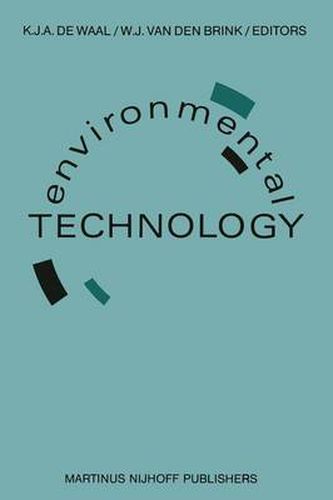Readings Newsletter
Become a Readings Member to make your shopping experience even easier.
Sign in or sign up for free!
You’re not far away from qualifying for FREE standard shipping within Australia
You’ve qualified for FREE standard shipping within Australia
The cart is loading…






This title is printed to order. This book may have been self-published. If so, we cannot guarantee the quality of the content. In the main most books will have gone through the editing process however some may not. We therefore suggest that you be aware of this before ordering this book. If in doubt check either the author or publisher’s details as we are unable to accept any returns unless they are faulty. Please contact us if you have any questions.
Five billion people, at present the world population, inevitably affect the quality of the environment. The general public in an increasing number of countries is getting more and more concerned about this deterioration in quality. As a result many people cast doubts upon the desirability of the increase in energy consumption, the production of superfluous goods, ever-growing waste flows, harmful emissions of industrial processes, and so on. Actually, no one can simply ignore these issues. For instance, the authorities could introduce more environmental legislation aiming at a healthy environment; industries could change to cleaner production processes; the public at large should assume an even more conservation-minded attitude rather than confine themselves to shaking a finger at ‘the industry’. In short, in all sectors of society there are often numerous ways and means of curbing environmental pollution. Clearly, environmental technology - the development and application of techniques to identify, quantify and reduce environmental problems - can make a substantial contribution here in many situations. Until now a large number of such new techniques have been developed. Many of these techniques not only appear to add greatly to reducing the burden on the environment, they sometimes also offer interesting economic advantages (savings in raw material and energy, etc.).
$9.00 standard shipping within Australia
FREE standard shipping within Australia for orders over $100.00
Express & International shipping calculated at checkout
This title is printed to order. This book may have been self-published. If so, we cannot guarantee the quality of the content. In the main most books will have gone through the editing process however some may not. We therefore suggest that you be aware of this before ordering this book. If in doubt check either the author or publisher’s details as we are unable to accept any returns unless they are faulty. Please contact us if you have any questions.
Five billion people, at present the world population, inevitably affect the quality of the environment. The general public in an increasing number of countries is getting more and more concerned about this deterioration in quality. As a result many people cast doubts upon the desirability of the increase in energy consumption, the production of superfluous goods, ever-growing waste flows, harmful emissions of industrial processes, and so on. Actually, no one can simply ignore these issues. For instance, the authorities could introduce more environmental legislation aiming at a healthy environment; industries could change to cleaner production processes; the public at large should assume an even more conservation-minded attitude rather than confine themselves to shaking a finger at ‘the industry’. In short, in all sectors of society there are often numerous ways and means of curbing environmental pollution. Clearly, environmental technology - the development and application of techniques to identify, quantify and reduce environmental problems - can make a substantial contribution here in many situations. Until now a large number of such new techniques have been developed. Many of these techniques not only appear to add greatly to reducing the burden on the environment, they sometimes also offer interesting economic advantages (savings in raw material and energy, etc.).